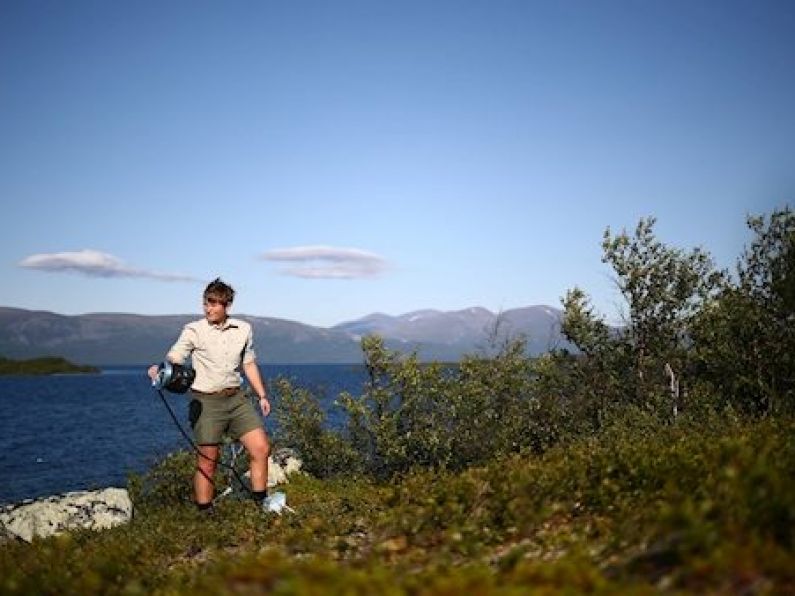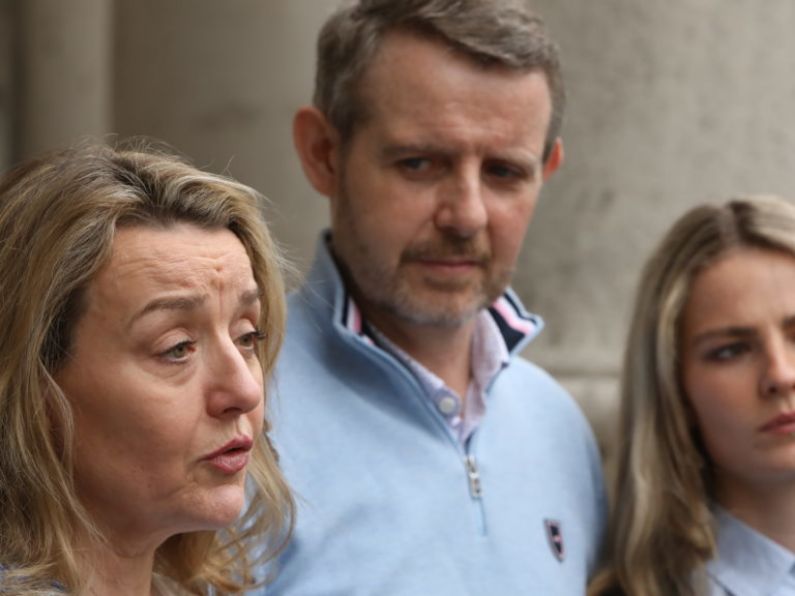Low-income earners, who are the losers when carbon taxes are increased, will need to be compensated in the budget to win support for climate action, writes Kyran Fitzgerald
The picture of the teenage activist Greta Thunberg scowling at President Donald Trump as he lumbered past her at the UN Headquarters in New York looks set to be one of the most memorable images of a year in which the words climate emergency appeared to take on a new meaning.
Closer to home, an increase in carbon taxes is on the menu in the upcoming budget as the Government led by Leo Varadkar seeks to respond to the upswing in support for action aimed at tackling the increase in Irish carbon emissions and to protect the wider environment.
However, shrewder politicians in the main parties especially those outside the major cities will be aware that it is best to tread with care when introducing tax rises that hit users of traditional dirty fuels hard.
It is therefore likely that increases in carbon taxes will be phased in gradually, in tip-toe formation.
The Irish Daily Mirror may have reflected the views of many when they responded with a foghorn of negativity to the Taoiseach’s announcement that the rate of tax per ton of carbon will be increased in the budget.
The tabloid painted a dark picture of what is to come in Finance Minister Paschal Donohoe’s budget, warning that the public will be “hammered” with a carbon tax and won’t be compensated with tax rebates.
The reporter went on to predict that as a result, another €2 would be “slammed” on a bag of coal, and a €1 on a bag of briquettes.
It is not hard to spot the political elephant traps lurking beneath the surface of a tax initiative drawn up to bring the country into line with its carbon commitments.
The case for carbon taxes has been largely endorsed by the college educated (and wealthy) middle class. Bringing along a much broader selection of voters on what could be a bumpy journey is a bigger challenge.
To date, across the world, just over 50 carbon pricing schemes have been implemented, or are scheduled to be implemented. In 2017, the combined revenues raised from such schemes amounted to $33bn (€30bn).
This sounds like big money, but in reality, it is small beer in the context of the global financial system.
Franziska Funk and Linus Mattauch of the Institute of New Economic Thinking at Oxford University posed this question: Why is carbon pricing in some countries more successful than in others?
Sweden — the homeland of Ms Thunberg — is the country where the pricing of carbon is most advanced, at $140 per ton of carbon dioxide, compared with $10 in many other countries.
The Swedish approach appears to be working. Between 1991 and 2016, the country’s economy grew 60%, yet total carbon emissions fell by a quarter, according to Ms Funk and Mr Mattauch.
The authors suggest that the Swedish success story can be put down to “extensive public dialogue and social deliberation”.
They cite other success stories, including the western Canadian states of Alberta and British Columbia.
In Alberta, the proceeds of the carbon levy have been split between spending on green projects and compensation for lower-income people who are most affected by the hikes in energy prices that carbon taxes entail.
In picturesque British Columbia, all carbon revenues are returned to households and firms, even though it has come under fire from the opposition Conservatives.
Supporters say that economic growth in the state far outstrips the rise in emissions. Political attitudes play a big role.
Carbon taxes go hand in hand with environmental awareness and high levels of trust in the political system. This is the case across Scandinavia and in Switzerland. Australia presents a cautionary tale, however.
Attempts there since 2012 to promote recycling through higher carbon taxes were rebuffed by the voters.
Earlier this year, the ruling Conservatives held on to power by winning votes in rural and working-class constituencies where people were concerned about the green policies of the Labour Party.
In Poland, the ruling populist Law & Justice Party has backed the coal industry. One huge Polish coal mine produced more emissions than the whole of New Zealand.
In countries such as Poland and Australia where mining remains important, there are roadblocks to change.
Donald Marron and Adele Morris, of the Brookings Institute in the US, believe it is important to consider carefully the best ways to put to use revenues from carbon taxes.
They urge governments to use at least some of the revenues to reduce other taxes and to soften the blow to both low-income households and producers of fossil fuel products. They refer to this as revenue recycling.
Ireland is fortunate in not having large coal or fossil fuel-based industries, but the economic challenges in the Midlands from closing the peat-burning power plants loom large.
Rural Ireland is more dependent on the consumption of coal and oil.
Already struggling, it is also in the crosshairs of Brexit. Clearly, a package will have to be put together for households and communities if there is not to be blowback.
One important carrot could be a programme of investment in the energy upgrade of houses and older buildings that would create jobs where they are most needed, in the hard-pressed parts of the country.
The tax on emissions must be part of a broader approach aimed at repairing the environmental damage of recent decades. However, a communication strategy will have to be crafted to secure the co-operation of communities.
Ireland has developed its own unique consultative approach to reform through citizens’ assemblies in recent years. We could make greater use of town hall meetings as we press ahead with new forms of consumer taxation.
Given that carbon taxes are likely on their own to be inflationary, there is a strong case for offsetting reductions in Vat on essentials. The EU could perhaps show more flexibility when it comes to reducing tax rates.
A low Vat rate on services provided in economically stressed regions could be looked at. The Brookings authors conclude that the best way to help low income families is through direct financial assistance, in the form of rebates or grants, rather than tax exemptions.
Subsidies aimed at promoting other forms of renewable energy are viewed as far less effective.
One recent study has concluded that carbon taxation is 20 times as effective as a subsidy aimed at promoting energy efficiency.
One suggestion is that subsidies tend to be captured by the better off, many of whom would make the investment, in solar panels, or insulation, for example, even without the subsidy.
Subsidies can have their place as a means of priming activity. However, the cost of wind and solar power has plummeted and arguably firms in these areas are less in need of backing.
We certainly do not need to pour taxpayer resources in the direction of owners of large cars, though a serious investment in electric vehicle refuelling outlets would appear to be justified.
Income from charging should begin to start repaying much of this up-front investment.
Economists suggest that some of the revenues could be used to correct the market failure that has meant that too little investment goes into basic energy and climate research.
Irish researchers could be encouraged to join forces with researchers elsewhere to examine how best to protect boglands and native forests.
There is scope for important environmental victories which could help win the public around to a green fiscal strategy.
Some of the proceeds of the carbon tax could be explicitly earmarked for the sort of flood and coastal protection works that will be increasingly required in the years ahead.
This form of earmarking can serve to win around local communities to the whole idea of environmental taxes.
Above all, the public must not be allowed to get the sense that this carbon tax hike is simply another clever raid on their wallets carried out by scheming bureaucrats at the Department of Finance.
But a successful carbon taxation measure would broaden the tax base and nudge more people in the direction of the right forms of energy consumption.
Increasing Irish emissions should start to taper off, saving the State millions in fines and helping to secure a healthier environment.
The State managed against strong opposition to introducing curbs on smoking and the use of smokey coal in Irish cities.
The restructuring of the tax system with a view to curbing carbon emissions is but the latest in a line of initiatives that are both rational and inevitable.
The sooner we get going on this, the better for all of us.
Nina Lindstrom Friggens, a researcher at the University of Stirling, measures the rate of carbon dioxide seeping from the soil at Lake Tornetrask near the village of Abisko, Sweden. Between 1991 and 2016, the Scandinavian country’s economy grew 60%, yet total carbon emissions fell by a quarter. Picture: Hannah McKay/Reuters






